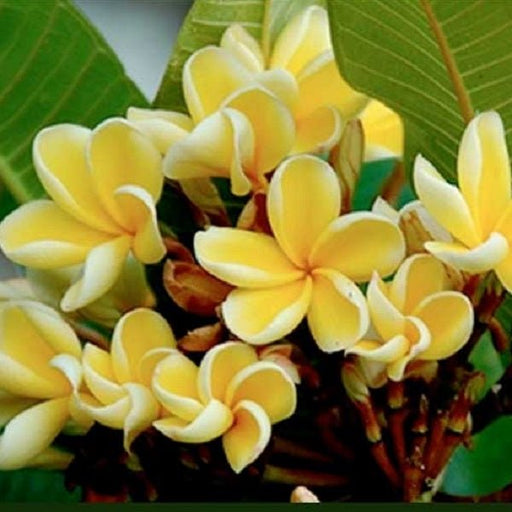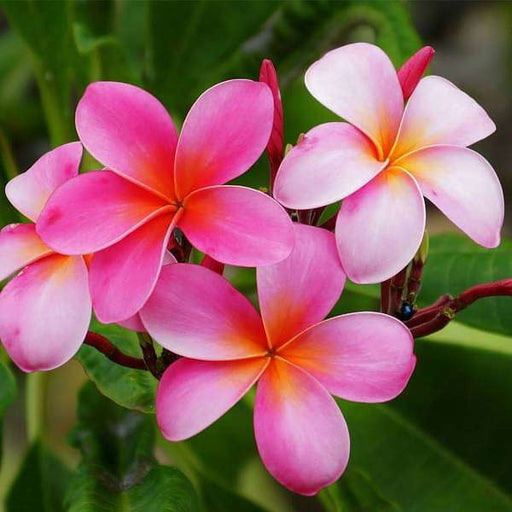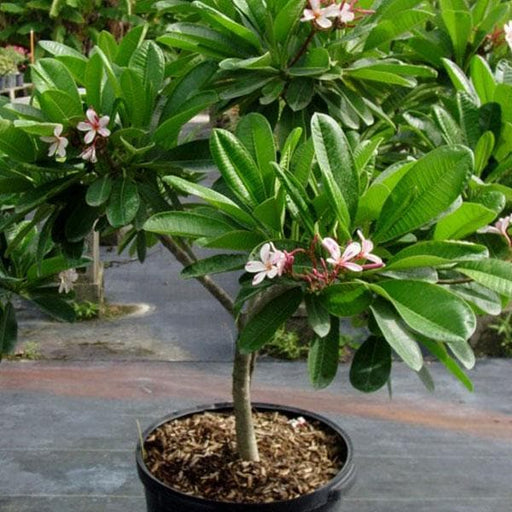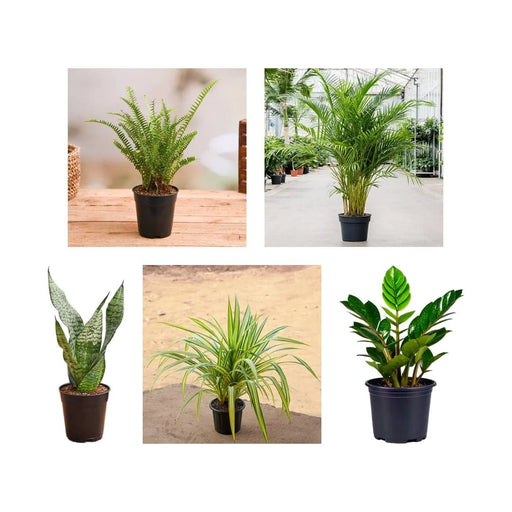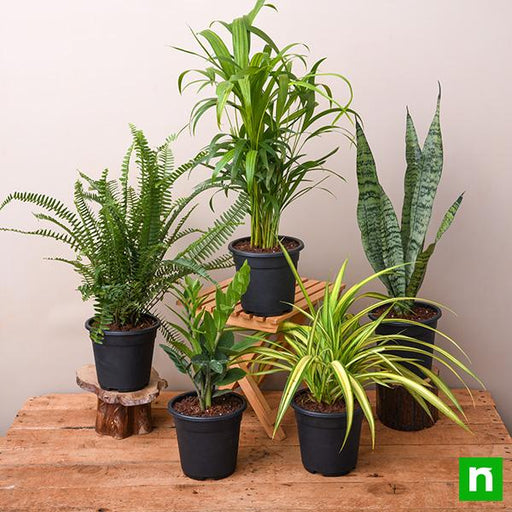Plumeria Champa plant care
Plumeria Champa plants require little care and maintenance. They thrive in warm and humid conditions and need to be watered only when the soil is dry. They prefer full sunlight and well-draining soil. Pruning can be done to maintain the shape of the plant and to promote new growth.
Plumeria Champa plant varieties
Plumeria Champa plants come in various varieties and colors, including pink, red, white, and yellow. The most common variety is the Plumeria alba, also known as the White Champa.
Plumeria Champa plant propagation
Plumeria Champa plants can be propagated through stem cuttings or grafting. It is best to take cuttings during the growing season and to let them dry for a few days before planting them in soil.
Plumeria Champa plant symbolism
In many cultures, Plumeria Champa plants are associated with love, devotion, and dedication. They are often used in traditional ceremonies and as offerings to deities.
Plumeria Champa plant uses
Plumeria Champa plants are used in various ways, including as ornamental plants, for perfume production, and as a traditional medicine for treating various ailments.
Plumeria Champa plant benefits
Plumeria Champa plants have many health benefits, including antibacterial and anti-inflammatory properties. They are also known to help with skin conditions, digestive problems, and respiratory issues.
Plumeria Champa plant cultivation
Plumeria Champa plants are easy to cultivate and can be grown in pots or in the ground. They prefer a warm and humid climate and need to be protected from frost.
Plumeria Champa plant pests and diseases
Plumeria Champa plants are susceptible to pests and diseases such as aphids, mealybugs, and fungal infections. Regular monitoring and proper care can help prevent these problems.
Plumeria Champa plant landscaping
Plumeria Champa plants can be used in landscaping to add color and fragrance to gardens and outdoor spaces. They are often planted as border plants or in mixed flower beds.
Plumeria Champa plant pruning
Pruning Plumeria Champa plants is important to maintain their shape and promote new growth. It is best to prune during the dormant season and to use sharp and clean tools.
Plumeria Champa plant fertilization
Plumeria Champa plants require regular fertilization to promote healthy growth and blooming. A balanced fertilizer with a higher phosphorus content is recommended.
Plumeria Champa plant watering
Plumeria Champa plants require moderate watering, and overwatering can lead to root rot. It is best to water when the soil is dry and to allow excess water to drain.
Plumeria Champa plant blooming
Plumeria Champa plants typically bloom in the summer and fall months, producing clusters of fragrant flowers.
Plumeria Champa plant dormancy
Plumeria Champa plants go dormant in the winter months and require less water and fertilization during this time.
Plumeria Champa plant climate
Plumeria Champa plants prefer warm and humid climates and are commonly found in tropical regions.
Plumeria Champa plant container gardening
Plumeria Champa plants can be grown in containers, making them ideal for small gardens or balconies.
Plumeria Champa Tree
The Plumeria Champa tree is a stunning addition to any garden or landscape. With its beautiful flowers and tropical feel, it's no wonder why this tree is so popular. It's easy to care for and can thrive in a variety of environments, making it a great choice for many homeowners.
Plumeria Champa White
Plumeria Champa white is a popular variety of the Plumeria Champa plant. With its white blooms and sweet fragrance, it's a great addition to any garden or landscape. This variety is easy to care for and can thrive in a variety of environments, making it a great choice for many homeowners.
Plumeria Champa Pink
Plumeria Champa pink is another popular variety of the Plumeria Champa plant. With its pink blooms and sweet fragrance, it's a great addition to any garden or landscape. This variety is easy to care for and can thrive in a variety of environments, making it a great choice for many homeowners.
Plumeria Champa Dwarf
The Plumeria Champa dwarf is a smaller variety of the Plumeria Champa plant. With its smaller size, it's a great choice for smaller gardens or for use in containers. This variety is easy to care for and can thrive in a variety of environments, making it a great choice for many homeowners.
Plumeria Champa Red
Plumeria Champa red is a stunning variety of the Plumeria Champa plant. With its red blooms and sweet fragrance, it's a great addition to any garden or landscape. This variety is easy to care for and can thrive in a variety of environments, making it a great choice for many homeowners.
Plumeria Champa Yellow
Plumeria Champa yellow is a beautiful variety of the Plumeria Champa plant. With its yellow blooms and sweet fragrance, it's a great addition to any garden or landscape. This variety is easy to care for and can thrive in a variety of environments, making it a great choice for many homeowners.
Plumeria Champa Care
Proper care is essential to the health and longevity of your Plumeria Champa plant. This includes regular watering, fertilizing, pruning, and pest control. With the right care, your Plumeria Champa plant can thrive for many years.
Plumeria Champa Bonsai
Plumeria Champa bonsai is a beautiful way to showcase the beauty of this plant in a miniature form. With the right care and pruning, you can create a stunning bonsai that will be the envy of your friends and family.
Plumeria Champa in Pot
Plumeria Champa in a pot is a great way to bring the beauty of this plant into your home. With the right potting soil and care, your Plumeria Champa can thrive in a container and provide beautiful blooms for many years to come.
Plumeria Champa Medicinal Uses
In addition to its beauty, the Plumeria Champa plant has several medicinal uses. Its leaves and bark have been used to treat a variety of ailments, including fever, cough, and headache. However, it's important to consult with a healthcare professional before using any plant for medicinal purposes.


